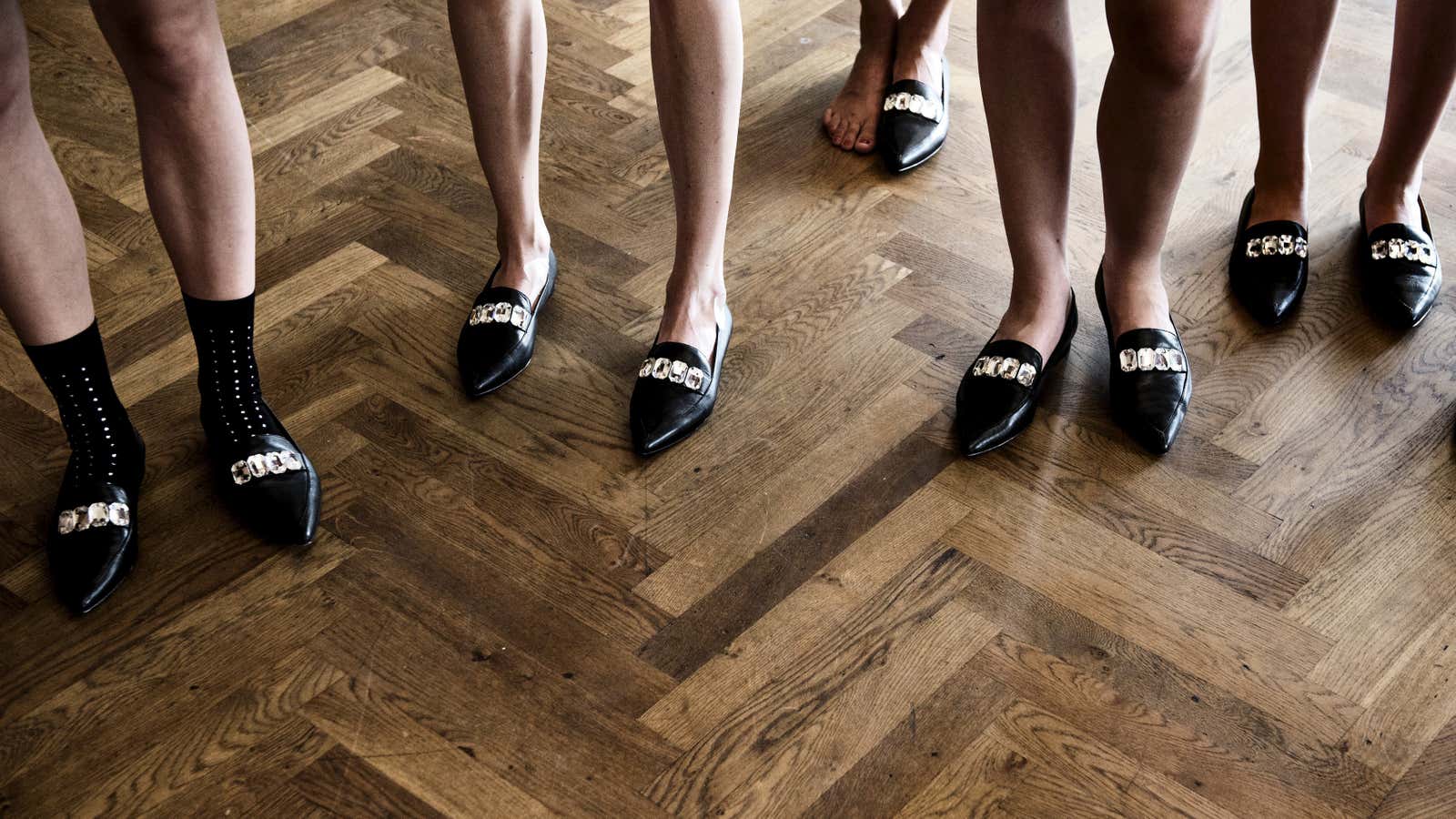If you’re wondering what you should wear for your next date, job interview, wedding, or criminal-mastermind costume, here’s your answer: black.
The de facto shade of formal attire and mourning, it is also the color most associated with confidence, intelligence, and—not least of all—sexiness, according to a recent survey of 1,000 people that looked at how they perceive others based on the color of their clothes. Black came in first or second among all colors in how often respondents associated it with positive traits, such as those mentioned, and it “barely figured” in association with negative traits, such as arrogance. The survey listed it as the safe choice for events such as those big first dates and job interviews—and yes, also for criminal-mastermind outfits.
When it comes to romantic attraction, though, black isn’t the only option. Asked to gauge the colors they find attractive on a potential mate of the opposite sex, both men and women liked to see a possible partner in black or red.
Women also gravitated toward men in blue, while orange and brown were universally disliked.
The survey doesn’t come from academia: It was conducted by Buytshirtsonline, a UK supplier of wholesale clothes from brands including Fruit of the Loom, Gildan, and American Apparel, so it should perhaps be taken with a grain of salt. But some of its conclusions do actually line up with those of studies published in peer-reviewed journals. A study from 2010 (pdf) similarly concluded that, “Regardless of sex, raters awarded highest scores to images in which targets wore red or black.” It looked at ratings of both the same sex and the opposite sex. A separate study (pdf) in 2008 found that the color red enhances men’s attraction to women.
A few of the other results from the survey were revealing. Pink, a color many connect with femininity—though only in the last few generations—was least associated with intelligence. That smacks of blatant sexism, though the survey cautioned that a color’s perceived sobriety was probably a factor. “The intelligence scale ran Black, Blue, White, Green, Purple, Brown, Red, Yellow, Orange and finally Pink, so we can also see a series that runs from ‘serious’ to ‘playful’ colours, and playfulness is probably not considered an intelligence signifier,” it said. “Somebody should probably tell the Financial Times,” it added, referring to the paper’s famous pink hue (which was actually a cost-saving measure when it debuted in 1893).
Red also scored low in perceived association with intelligence, and high on arrogance. You can decide what those results say about our perceptions of potential mates.
Luckily, there’s no shortage of black clothing available if you want to avoid red’s connotations. Black has long been a favorite of fashion designers, such as Japanese luminary Yohji Yamamoto, though he doesn’t exactly see it as a way to attract others.
